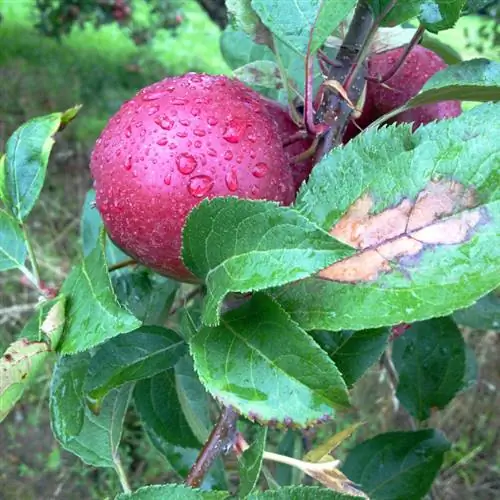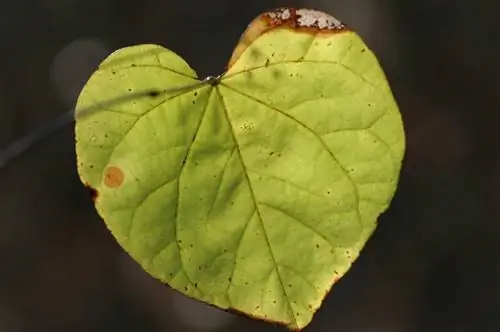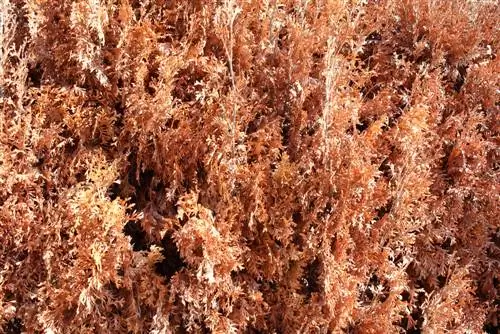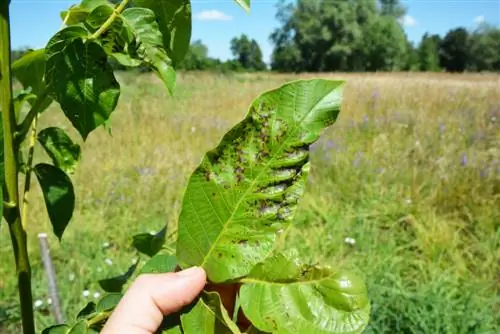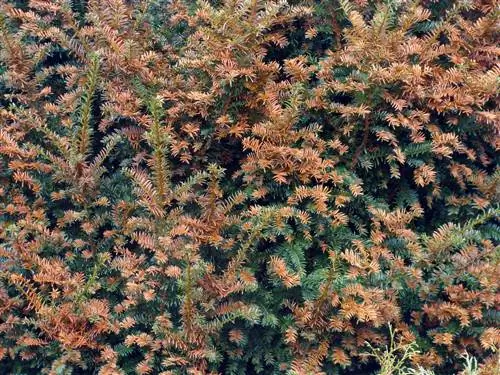- Author admin [email protected].
- Public 2023-12-16 16:46.
- Last modified 2025-01-23 11:19.
In principle, it is usually not possible to treat apple trees in private orchards with sprays, as most of the damage and illnesses recur naturally. However, treatment may be necessary, especially in dense apple crops, in order to secure the tree population and the harvest.
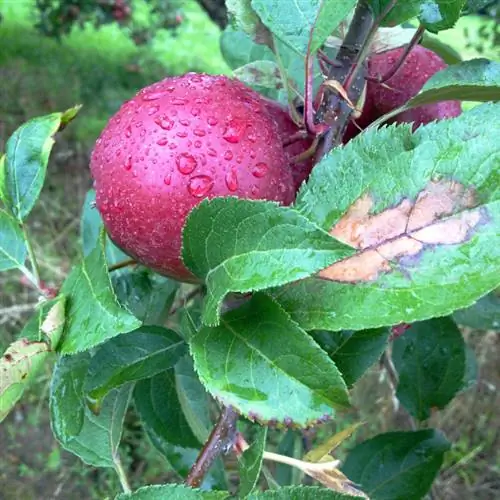
What diseases occur in apple trees and how can you fight them?
Apple tree diseases include pests such as aphids, codling moths and apple leaf aphids, as well as fungal diseases such as powdery mildew, apple scab and sooty spot. Preventive measures include sparse treetops, proper fertilization and pruning methods. In the case of acute infestation, targeted removal of affected areas or the use of sprays can help.
The many harmful images of the apple tree
The apple tree is one of the most common fruit trees in commercial cultivation and in private gardens in this country. Once pests or diseases have invaded a certain region, they usually find a wide breeding ground for further spread. What is important for a targeted countermeasure is the clear recognition of a specific infestation and its differentiation from sometimes very similar damage patterns.
Animal damage to the apple tree
An important threat to tree he alth and the expected apple harvest are various insects that feed on parts of the fruit, the tree sap or the leaves and also use them as breeding grounds. The insects that can pose a particular danger to apple trees include the following animal species:
- Aphids
- the codling moth
- the apple wrinkle louse
- the apple rust mite
- the apple blossom picker
- the fruit tree spider mite
- the little frost moth
The various pests are usually difficult to detect by the human eye, even due to their small body size. However, they can be recognized on the one hand by damage to leaves and fruits, but on the other hand also by webs and other remains.
Fungal infestation as a danger that should not be underestimated
A fungal infestation can pose a particularly serious threat to the apple trees in your garden because fungi spread even faster than animal pests in a tree stand and can massively damage its vitality. The most important fungal diseases affecting apple trees include the following species:
- apple mildew
- the apple scab
- Monilia fruit rot
- the sooty spot disease
If a fungal infection is noticed on the apple trees, it is advisable to act quickly with suitable countermeasures. Fungal diseases can spread extremely quickly and infect other apple trees in the garden or in the neighborhood.
Measures against various pests and fungal diseases
Basically, it never hurts to give the apple trees greater vitality and thus better resistance to harmful influences through precisely coordinated fertilization and regular tree pruning. In particular, the formation of a clear and well-ventilated tree crown is of great importance, as rapid drying of the leaves after periods of rain counteracts the spread of fungal infestation. Many birds and insects, natural predators of apple tree pests, can also find and remove their food more easily in sparse treetops. Chemical sprays should generally only be considered as a last resort, as they usually pollute the current harvest and make it inedible.
Fighting the most important apple tree pests
Images of the common damage patterns on apple trees often show feeding areas on apple blossoms and fruits filled with brownish residue. These indicate the larvae of the so-called codling moth, which can be contained from spring with a corrugated cardboard ring around the trunk. The larvae like to settle under this cardboard ring from spring onwards and can be removed and destroyed in June or July. The various subspecies of the frost moth, on the other hand, can be combated a little better because they move along the trunk bark and can be caught with a glue ring available from specialist retailers (€9.00 at Amazon). Typical images of a frostbite moth infestation include leaf shoots hung together by webs and perforated leaves. The apple leaf louse sucks on the underside of the leaves of the apple tree, causing leaf deformation. Infected areas can be generously removed with summer pruning and the cutting material burned.
Take action against fungal infestation on apple trees
The best protection against the dreaded powdery mildew is to prevent the tree crown from being shaped with targeted cuts and to provide suitable wound care at large interfaces so that the fungal spores cannot penetrate into the interior of the tree. Typical images of an infestation with Monilia fruit rot are brown, rotten fruit mummies that are dotted with white mold spots. A control measure against further spread is the regular collection of infected fruits and the removal of fruit mummies during winter pruning. In rainy summers, the fungus Gloeodes pomigena causes sooty spot disease to leave the apple peel with a soot-like coating. This does not rule out consumption after washing, but it can lead to the fruit spoiling more quickly in storage. As a countermeasure, you should also encourage the formation of a thinner tree crown.
Tips & Tricks
Apart from animal pests and fungal diseases, there are also other harmful diseases on apple trees. Glassiness refers to watery, translucent areas of fruit flesh underneath the peel. This metabolic disease occurs primarily when there is excessive fertilization and strong shoot growth after heavy pruning. The so-called speck appears as brownish spots in the pulp, but is initially harmless for consumption. Countermeasures include reducing fertilization, liming the tree and switching to summer pruning.

